
NOW Articles Written By Members
A look back at a common, but classic commemorative – Wisconsin’s Territorial Centennial
A side-tracked story: Mardi Gras Doubloons
A look back at a collecting specialty – the O.P.A. ration tokens of WWII
Bullion And Coin Tax Exemption – Act Now!
Is There A Twenty Cent Piece We Can Add To A Collection
Capped Bust Half Dollars: A Numismatic Legacy
U.S. Innovation Dollars: Our Most Under-Collected Coin?
My 2023 ANA Summer Seminar Adventure
In defense of the American Women's Quarters
A look back in numismatic history – the Hicksville Silver Dollar Hoard
The proofs so few of us collect: Jefferson Nickels
A look back in numismatic history – a story too good to be true
Kilroy promotes war bond sales
Just passing through a short-lived bank
The Kewaunee Line Encased Coin Folder
Lyman C. Draper: Collector, Historian, Genealogist
>> More articles in the Archive
For more NOW Articles Written By Members,
<< More articles in the Archive
Some Electrifying Tokens
[by Dreux J. Watermolen #1755]
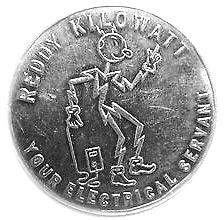 Many N.O.W. News readers may remember Reddy Kilowatt, a corporate mascot used by power companies from the late 1920s through the 1970s. Although now rarely seen outside of antique shops and eBay sales, Reddy Kilowatt was once one of America’s most recognized advertising icons, comparable in stature to the Morton Salt Girl, the Pillsbury Dough Boy, Mr. Peanut, the Jolly Green Giant, Aunt Jemima, Smokey Bear, Ronald McDonald, and the Energizer Bunny. A couple of advertising tokens featuring Reddy Kilowatt recently recharged my interest in this character.
Many N.O.W. News readers may remember Reddy Kilowatt, a corporate mascot used by power companies from the late 1920s through the 1970s. Although now rarely seen outside of antique shops and eBay sales, Reddy Kilowatt was once one of America’s most recognized advertising icons, comparable in stature to the Morton Salt Girl, the Pillsbury Dough Boy, Mr. Peanut, the Jolly Green Giant, Aunt Jemima, Smokey Bear, Ronald McDonald, and the Energizer Bunny. A couple of advertising tokens featuring Reddy Kilowatt recently recharged my interest in this character.
An Energetic Character
Ashton B. Collins, Sr. (1885-1976) created the Reddy Kilowatt character while working for the Alabama Power Company. He wanted to ‘humanize’ electric utility service for marketing and corporate communications purposes at a time when many homes still did not have electricity for heating, cooking, and lighting.
Although Collins formulated the idea for the character, Dan Clinton, an engineer in Alabama Power’s drafting department, created the first usable sketches of Reddy Kilowatt. Reddy was drawn as a stick figure with a torso and limbs made of lightning bolts (Fig. 1). His rounded head had a light bulb for a nose and wall outlets for ears (early drawings used two-hole receptacles; later versions had the 3-hole grounded type). The original figure had five arms to illustrate the many capabilities of electric service, but most renditions sported only two.
Reddy Kilowatt debuted publicly on March 11, 1926, as part of Alabama Power’s exhibit at the Alabama Electrical Exposition. The company also ran Reddy Kilowatt newspaper advertisements in conjunction with the expo. Following the expo, Collins retained the copyrights to Reddy.
In 1932, Collins had a friend develop additional sketches of the character that he could use to promote a proposed Reddy Kilowatt advertising program. At the time, Edison Electrical Institute had hired Collins to promote electrical cooking appliances around the country. He used his business travels to network with utility managers and promote the use of Reddy.
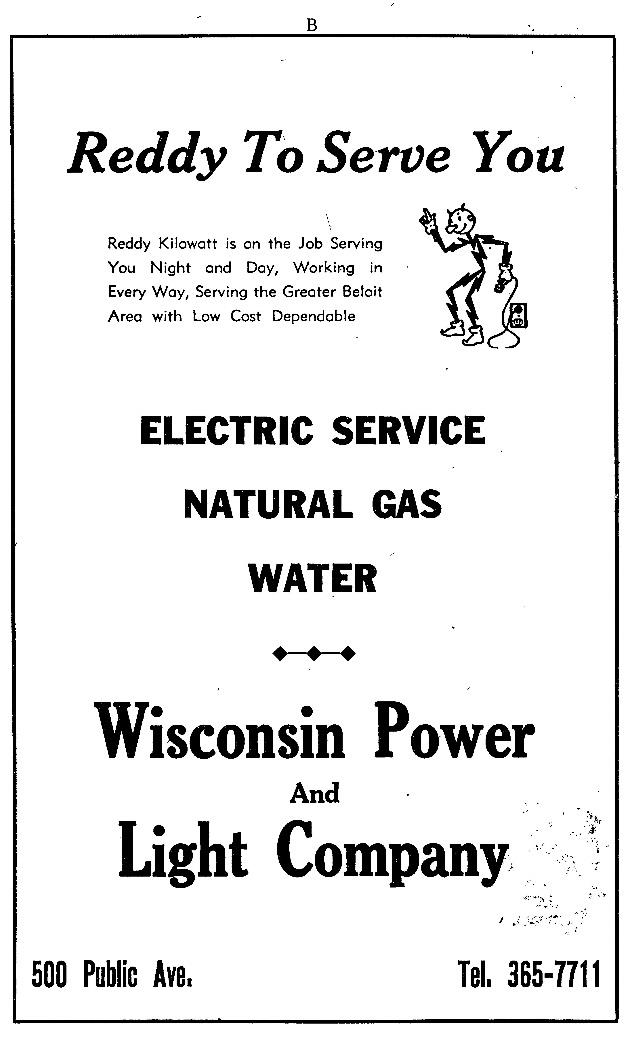
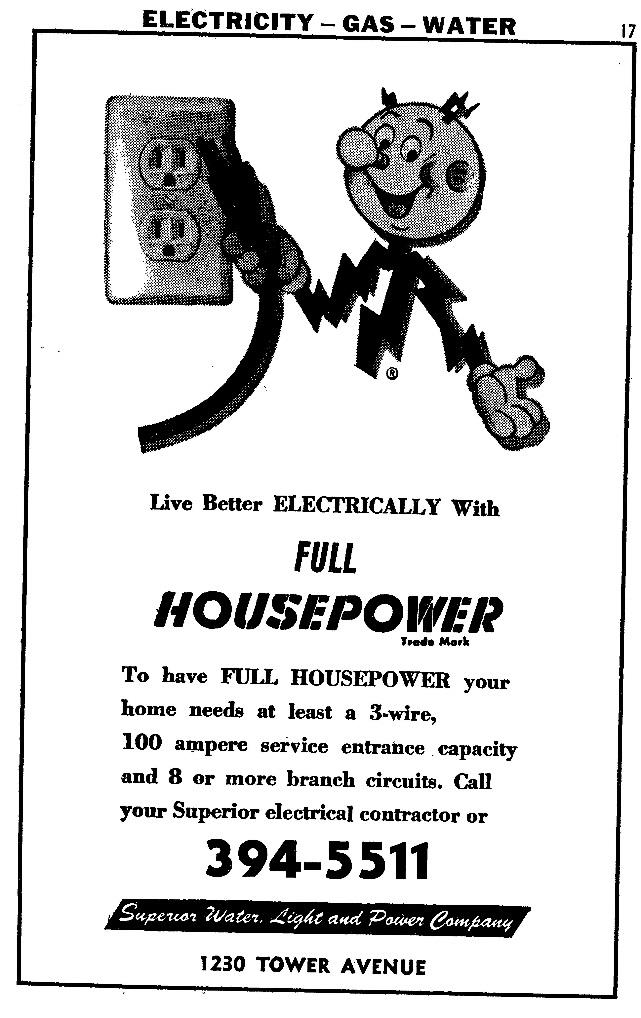
Figure 1 - Full page ads like these from the 1968 Beloit City Directory and 1971
Superior City Directory were common throughout the 1960s and 1970s.
A “Spokesvolt” and Charged Up Advertising
Collins recruited his first client, the Philadelphia Electric Company, in 1933, and by the end of 1934, at least six other utility companies had adopted his program. Reddy Kilowatt was subsequently licensed to some 300 electrical companies throughout the U.S. and in at least 12 foreign countries. Collins registered his trademarks in prospective markets early on: Canada (1934), Argentina (1937), Great Britain (1938), and Mexico (1938). According to records in the National Archives, trademarks were also granted in Australia, Barbados, Kenya, the Netherlands Antilles, South Korea, and Venezuela, and the character was widely used in South America and Australia.
From the 1930s through the late 1960s, subscribers to Collins’ program received clip art depicting Reddy Kilowatt in various poses for use in advertisements. This “mat service” also offered complete ads to which the licensees could simply add their company name (Fig. 1). Reddy News, a semi-annual publication, provided ideas for using the character. Common themes included the benefits of electrical appliances for farms and homes (“Live better electrically…”) and safety (“Kite flying season…”). A wide variety of Reddy holiday poses became available, often highlighting electrical appliances as gift ideas. Economic notions included the inexpensiveness of electric service (“I work for a penny a day”) and the payment of taxes by investor-owned utilities. More humdrum themes addressed power outages and timely bill payments.
Collins made youth education a priority. His initial “Reddy Remarks” materials even included a bedtime story booklet. Licensee companies sponsored Reddy Kilowatt youth clubs throughout the late 1940s. In the mid-1960s, a comprehensive program for client companies incorporated youth education with capitalist, free enterprise values. The program emphasized reaching out to youth during a period of social upheaval in order to protect the interests of investor-owned utilities.
The program’s mass media elements also reflected an emphasis on youth outreach. Collins’ company, Reddy Kilowatt, Inc., partnered with Walter Lantz Productions (creators of Woody Woodpecker) in 1946 to produce Reddy Made Magic, a cartoon about the history of electricity. Eleven years later, a commercial produced by Terrytoons followed. The Mighty Atom, an update to Reddy Made Magic with a new sequence promoting atomic energy, appeared in 1959. Licensees were encouraged to use Reddy Kilowatt in their own sponsorship of radio and television programs, and some used the character in commercials produced locally.
Reddy Kilowatt Tokens
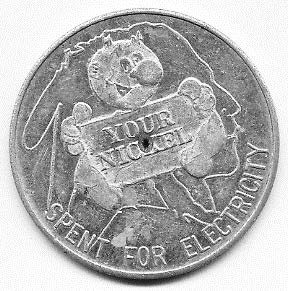
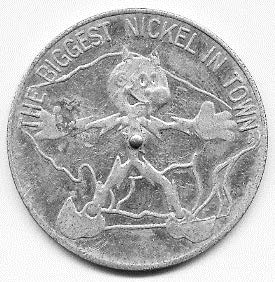
Figure 2 - Reddy Kilowatt spinner token with a
James Earle Fraser theme.
The impetus for this article is my acquisition of two tokens featuring the Reddy Kilowatt character. The first, a 32-mm, aluminum spinner token (Fig. 2), includes a drawing of Reddy Kilowatt holding a sign that reads “YOUR NICKEL” above the caption “SPENT FOR ELECTRICITY”. An outline of the Native American Indian head from James Earl Fraser’s buffalo nickel comprises the background. The reverse features Reddy posed with outstretched arms under the caption “THE BIGGEST NICKEL IN TOWN”. An outline of a Fraser’s buffalo is visible in the background.
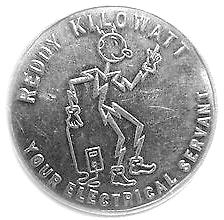
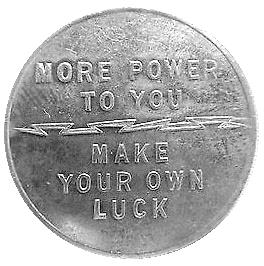
Figure 3 - A Reddy Kilowatt advertising token.
The obverse of the second token, a 32-mm brass advertising piece (Fig. 3), depicts Reddy plugged into a wall outlet encircled by “REDDY KILOWATT / YOUR ELECTRICAL SERVANT”. The reverse simply reads “MORE POWER / TO YOU” and “MAKE / YOUR OWN / LUCK” separated by a lightning bolt.
Aside from my two tokens, I am also aware of a transportation token from Missouri that uses the character. The obverse features a walking Reddy above “REDDY KILOWATT” and encircled by “ST. JOSEPH LIGHT & POWER CO. / ONE FARE”. The reverse uses the same illustration encircled by "NEXT TIME / TAKE THE BUS".
Power-driven Characters and Changing Times
Aside from the tokens, Reddy Kilowatt also appeared on various souvenir and promotional items. A recent review of Internet sales sites turned up Reddy Kilowatt tie clasps, ashtrays, pot holders, t-shirts, Zippo lighters, pens and pencils, earrings, and jewelry charms. There was even a Bobblehead nodder.
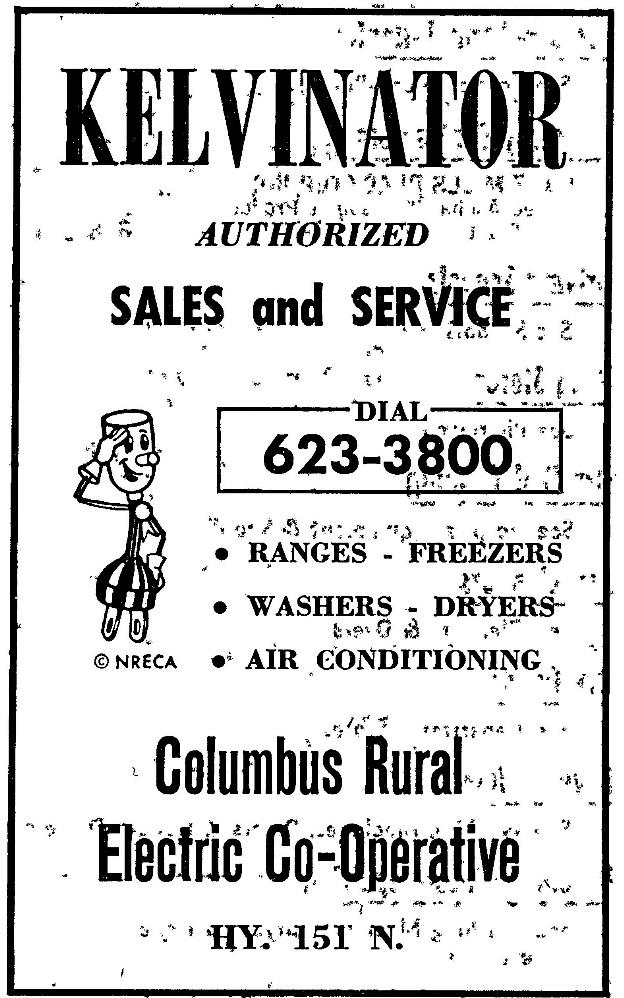
Figure 4 - Rural electric cooperatives used
Willie
Wiredhand, shown in this
advertisement form the 1968 Columbus
telephone directory.
Not shockingly, the success of Reddy Kilowatt prompted competitors to develop similar mascots. Rural electric cooperatives and public utility districts benefited from Willie Wiredhand, a character developed in the early 1950s by the National Rural Electric Cooperative Association. Like Reddy, Willie was a stick figure, but with a lamp socket for a head and an electric plug for legs and feet (Fig. 4). Reddy Kilowatt, Inc. and over 100 power companies filed lawsuits against the NRECA, alleging copyright violations and trademark infringement, but got zapped when the U.S. District Court of Appeals found the two characters distinctly different. It didn’t take long for other electrical enterprises to develop their own mascots (Fig. 5).
Reddy Kilowatt remained a corner stone in corporate communications until energy conservation replaced energy production as a national goal in the mid-1970s. By the 1980s, Reddy’s lights had dimmed. In 1998, Minnesota-based Northern States Power Company bought the rights to Reddy and created a subsidiary, Reddy Kilowatt Corp., to manage the cartoon. That company later introduced Reddy Flame, a character promoting natural gas. Neither Reddy character proliferated.
Only time will tell if Reddy will recharge and join the ranks of M&M’s candy characters, AFLAC’s duck, Geico’s gecko, and other recent advertising characters in the lexicon of popular culture. In the meantime, Reddy Kilowatt items can charge up a collection, and I’d be curious to learn about other tokens and medals featuring this character.
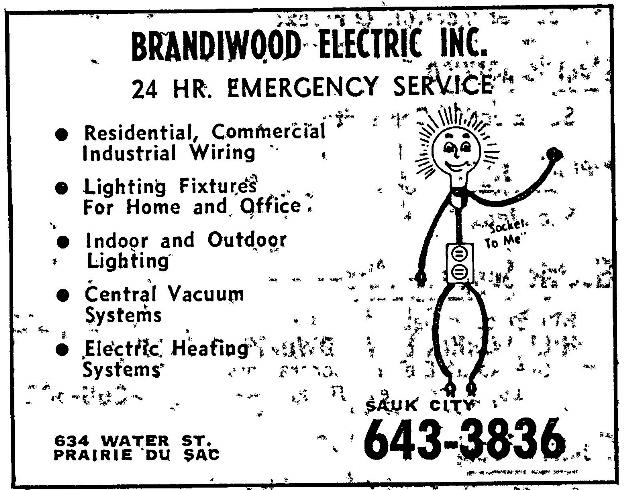 Figure 5 - Many electrical enterprises developed similar characters. These ads from the 1972 Baraboo and 1976-77 Waukesha telephone directories are but two examples. |
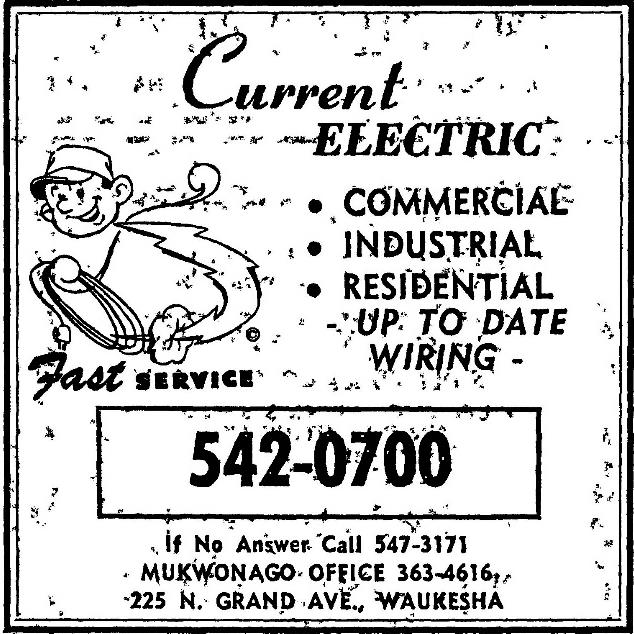 |
References
Baraboo, Wisconsin telephone directory. (1972).
Columbus, Wisconsin (and vicinity) telephone directory. (1968).
Polk’s Beloit (Rock County, Wis.) City Directory, 1968. St. Paul, MN: R.L. Polk & Co. Publishers.
Polk’s Superior (Douglas County, Wis.) City Directory, 1971. St. Paul, MN: R.L. Polk & Co. Publishers.
Reddy Kilowatt Flickr site: www.flickr.com/groups/958468@N25/.
“Reddy Kilowatt gets retirement.” Wilmington Sunday Star-News (May 8, 1988, p. 8E).
Reddy Kilowatt.Org website: www.reddykilowatt.org.
Reddy Kilowatt Records, 1926-1999, Archives Center, National Museum of American History, Smithsonian Institution, Washington, DC. (Records include letters, speeches, memoranda, photographs, scrapbooks, company publications, advertisements, presentation materials, reports, company histories, comic and coloring books, films and filmstrips, and audio discs and tapes.)
United States Court of Appeals Fourth Circuit. 240 F2d 282 Reddy Kilowatt, Inc. v. Mid-Carolina Electric Cooperative, Inc.[and National Rural Electric Cooperative Association, Inc.]. No. 7290 (1957).
Waukesha, Wisconsin telephone directory. (1976-77).
Have an interesting numismatic topic you’d like to share with your fellow NOW members?
Send your article to evan.pretzer@protonmail.com today!!!